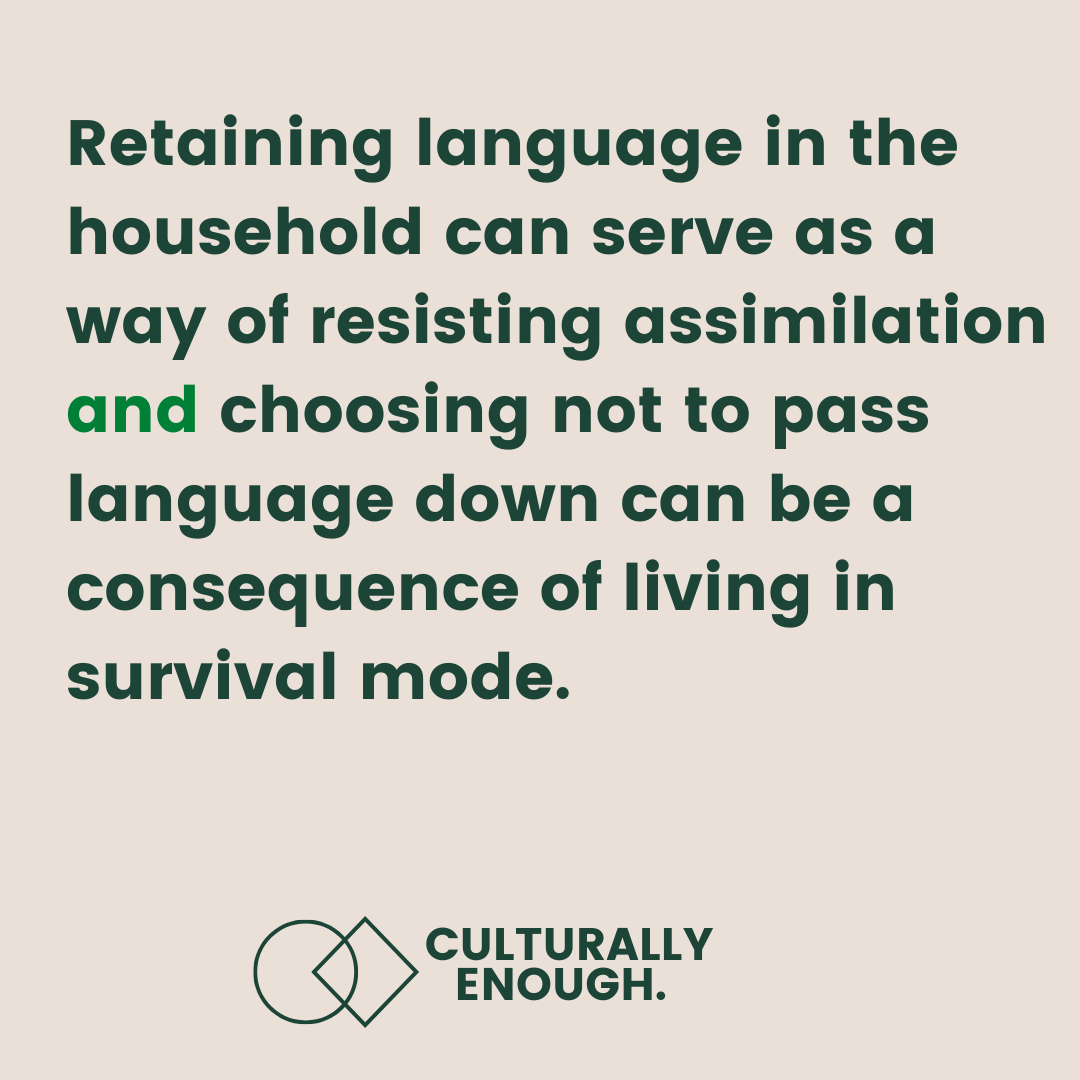How language shapes your multicultural identity
including linguicism, different types of bilingualism and how to reconnect with your heritage language (+ a reading list for you!)
Thank you for your patience on this week’s newsletter being slightly delayed! If you missed the Instagram story, Wednesday was one of those days where everything was falling apart and falling behind. Rather than send something just to send something, I wanted to make sure I had time to thoroughly review and edit my letter to you.
Culture has been referred to as “the software of the mind ” (Hofstede, 1994) and in my opinion, language in any form is a requirement for being able to access or understand that software completely.
After all, language and paralanguage are embedded into cultures. They are how we communicate, express ourselves, understand, and share in religion, values and customs. It also influences our understanding and enjoyment of pop culture — movies, books, folklore, superstitions, music, and so on. In short, language is essential to culture.
In this letter, we will discuss:
Why you may or may not have learned (or had access) to your heritage language
4 different types of bilingualism (with a poll for you to share how you identify)
What research says about bilingualism and language’s impact on our cultural self-awareness
How we can reconnect with our heritage languages
And I provide a reading list for you to go deeper into these concepts on your own!
Why you may or may not have learned your heritage language
For some people, “heritage language” doesn’t truly exist for many reasons, including double or triple migratory patterns and colonization. The “mother tongue” may not even be the mother tongue anymore. Learning and grieving this is a part of claiming our heritage culture, too.
For others, learning your heritage language becomes a way to claim your identity on a granular level. For instance, India has 22 “recognized” languages but there are likely hundreds of other languages (and dialects) that are spoken in the country — or in the world by Indians. As such, by learning your specific heritage/familial language, you allow yourself to claim a part of your identity that isn’t recognized on a macro scale but exists. It’s a form of resistance.
How we were raised to assimilate or resist assimilation growing up impacts our relationship with language. Some folks were born in a new country, and their first language was still their parent’s native tongue — not the dominant host language. While others were not taught any other language than English, or the dominant host language, because their parents or grandparents were in survival mode or believed that by focusing only on English their kids would have it easier and better.
Keep reading with a 7-day free trial
Subscribe to Culturally Enough. to keep reading this post and get 7 days of free access to the full post archives.


